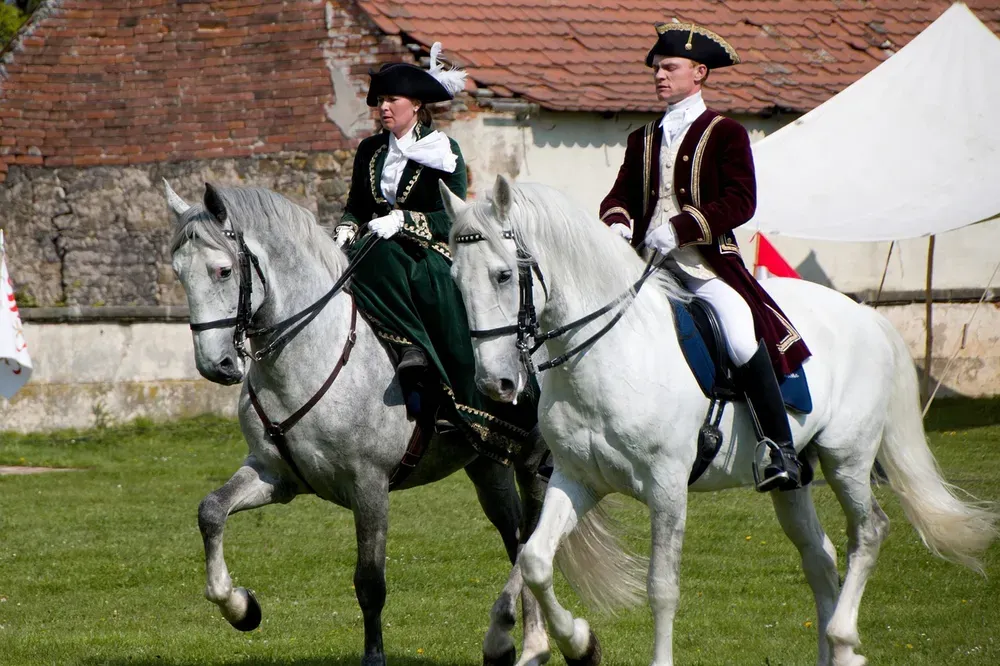
Table of Contents
Learning to ride-on the-bit will transform your riding and your horse's way of moving. Many riders never master this skill and do not think it is important, however riding on the bit improves your horse's strength from tail to poll and will add that wow factor.
What is riding my horse on-the-bit?
Some riders think that contact with the horse's mouth rather than riding with washing line reins is “riding with your horse on the bit”. However, this is far from the case and will not improve your horse's balance and core muscle strength. So what is riding on the bit?
How to identify riding on-the-bit
Riding on the bit occurs when the horse holds his head in a vertical position with good flection at the poll while the rider has light contact with the horse's mouth. The horse will be ridden with his hind quarters really engaged and he will be riding into the rider's hands. The rider will notice a lifting and rounding of the horse's back when their horse is ridden forward on the bit.
Having the ability to ride your horse on-the-bit opens up the door to advanced riding techniques. So we need to look at horses working on-the-bit and others who are not.

Example of a horse working on on-the-bit
The horse is moving in harmony with the rider and is paying attention to the commands of the rider. The horse will have good core strength and very good muscling on top of its necks and across the back and quarters. This is a strong and athletic horse.

Examples of horses that are not worked on-the-bit:
Novice riders contact horse's mouth for direction, but it doesn't improve core muscles or balance. Horses lack flection and impulsion, ridden above-the-bit, and riders appear as passengers. However, they can easily learn to ride on-the-bit and improve.
How can you tell that a horse is above-the-bit
A horse is above the bit when his nose is pocked out and his head is not held vertically. There are degrees of this with some horses being just above the bit while others are real star gazers.
How do I use the half-halt to get my horse on the bit?
Start at the walk. You will be asking for your horse to flex at the poll while maintaining an active long striding action. Ideally, an experienced rider has already taught your horse how to be ridden in this fashion. Then you can concentrate on pressing the right buttons to create riding on-the-bit.
Ride forward at an active walk and apply a half-halt aid. The second your horse flexes at the poll you will notice his back lift. You must now have light contact with his mouth through your reins while using your legs and seat to drive him forward into your hands. If you are sitting correctly you will easily feel the rhythm of the walk.

Article Suggestion
Half-Halt Training: Improving Horse PerformanceThe moment your horse lifts his head and comes off-the-bit repeat the whole process and expect him to remain on-the-bit. However, do not expect him to work on-the-bit for a long time as he will not have developed the muscles to do this. When he is permitted to come off-the-bit he will stretch his neck down so let him walk on a long rein as a reward.
When you have mastered alternating between riding on-the-bit and above-the-bit at the walk. Progress to doing the same at the trot and finally at the canter.
Tips for on-the-bit horse training
Iberian horse vs thoroughbreds:
Iberian horse breeds naturally work on the bit but thoroughbreds need time to develop the muscles to do so.
Don't be strong-handed:
Never be strong-handed when your horse is on the bit or you will teach him to over-bend.
Bending gadgets:
Be wary of “bending gadgets” because unless you are experienced your horse will flex at the poll without working his quarters correctly.
The take-home message
The half-halt is easily incorporated into your everyday riding. However, it is more difficult to learn to ride your horse on the bit, but this skill will transform your riding and your horse's performance. Unless you are experienced have someone else teach your horse how to flex and move forward so that you can concentrate on learning to ride on-the-bit.
FAQs
Will riding my horse on the bit be good for his kissing spine?
Can I be a good rider without riding my horse on the bit?
Can I progress in dressage if my horse does not go forward on the bit?

Article Suggestion
Kissing Spine in Horses: Causes, Symptoms, and Treatment Options
